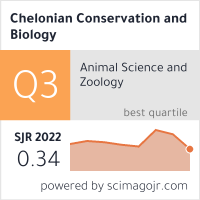RAPID DIAGNOSTIC TESTS FOR IDENTIFYING ANTIBIOTIC-RESISTANT BACTERIA
Abstract
Antimicrobial resistance (AMR) poses a significant and difficult problem in public health. As a result, there is an increasing need for techniques and technologies that can quickly determine the susceptibility of microorganisms to antimicrobial agents (AST). The traditional approaches and technology used for AMR diagnosis and AST in clinical microbiology are laborious, have long turnaround times (TAT), and are often costly. Consequently, the prescription of empirical antimicrobial therapy contributes to the spread of antimicrobial resistance (AMR), resulting in greater death rates and increased healthcare expenses. This review provides an overview of the latest advancements in techniques and technology for combating antimicrobial resistance (AMR). The focus is on important research areas that enable the creation of cutting-edge diagnostic tools for AMR. Initially, we provide a concise overview of the traditional approaches used to tackle AMR detection, surveillance, and AST. Subsequently, we analyze the latest unconventional techniques and the progress made in each area, which include whole genome sequencing (WGS), matrix-assisted laser desorption/ionization time-of-flight (MALDI-TOF) spectrometry, Fourier transform infrared (FTIR) spectroscopy, and microfluidics technology. Here, we provide examples of commercially accessible diagnostic tools for AST. Ultimately, this article discusses viewpoints about the use of new ideas in order to create revolutionary technologies and procedures for AMR diagnostics.
Keywords: molecular diagnostics, antimicrobial resistance, antibiotic susceptibility testing, microfluidics, point-of-care, lab-on-a-chip, MALDI-TOF, FTIR, sequencing.
Downloads
Published
How to Cite
Issue
Section
License
Copyright (c) 2022 Chelonian Research Foundation

This work is licensed under a Creative Commons Attribution 4.0 International License.






